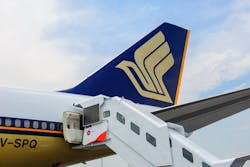Singapore aerospace industry creates more than 1,500 new jobs, with investment from Airbus, ATR, Bell, Bombardier, Cessna, Meggitt, Pratt & Whitney, others
SINGAPORE, 14 Feb. 2014. Singapore Aerospace industry employs 19,900 workers and is currently worth $8.7 billion (Singapore dollars), according to the Singapore Economic Development Board.
Over the past two years, companies such as ATR, Bell Helicopter, Cessna, Bombardier, Meggitt, Pratt & Whitney, and Airbus Group subsidiaries Satair and Vector Aerospace have made new aftermarket investments at the Seletar Aerospace Park, an industrial park in Singapore catering to the aerospace industry. The area also boasts new manufacturing facilities from Pratt & Whitney and British-based RLC Engineering. When fully implemented, these investments will create more than 1,500 new jobs in Singapore’s aerospace industry.
The new investments reflect the continued success, competitiveness, and leadership of Singapore’s aerospace industry, says a representative. “The biennial Singapore Airshow brings together the best in the industry from around the world, and positions Singapore as a key location for aerospace companies seeking to expand in Asia-Pacific,” says Yeoh Keat Chuan, managing director of the Singapore Economic Development Board.
Nine out of 10 of Singapore’s Aerospace industry workers are skilled; with eight out of 10 of being Singaporeans or permanent residents.
“Our educational institutions are investing heavily to enhance their curricula. At the new campus of our Institute of Technical Education, there is a Boeing 737 to enhance the experiential learning of our students,” says Teo Chee Hean, deputy prime minister. “Temasek Polytechnic will also be opening a new building that will house an aircraft hangar and two flight simulators later this year.”
Singapore is focused on enhancing its infrastructure; the 1,080-hectare expansion of Changi Airport, slated to be completed by mid-2020s will allow for new industrial zones for maintenance, repair, and overhaul (MRO) and air cargo activities to grow.
The past 12 months have seen investment in research and development. In July 2013, Rolls-Royce established a $75 million (Singapore dollars) corporate laboratory with the Nanyang Technological University to pursue research in core areas, such as manufacturing and repair technologies, computational engineering, and electrical and power control systems.
Singapore aerospace industry images courtesy of Shutterstock.
